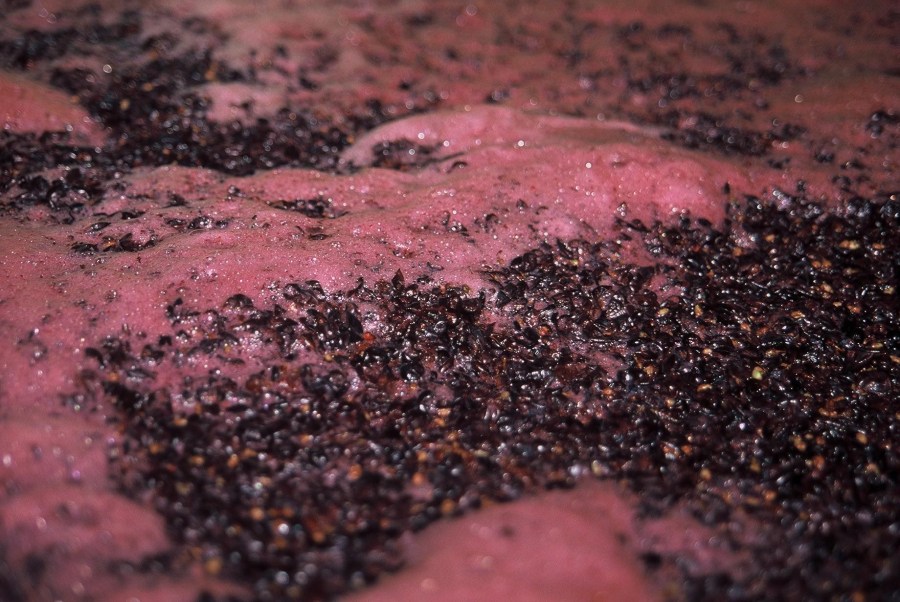Attending the first Wine GB tasting last month was a real treat, allowing me to taste a wide range of wines from all the different producers across the UK. Admittedly, not every single producer was on show, but it was a great showcase, highlighting some amazing things happening with producers across the UK and the level of quality was very impressive. It was evident that producers were committed to striking the right balance of acidity, sweetness and complexity to suit the wine style, and Laffort offers a huge range of tools available to the winemaker to curate a particular wine style.
Acidity balancing
Malic acid is the dominant acid present in English wine styles due to the British climate. Malolactic fermentation (MLF) is a wine style choice, but can be difficult to achieve with the conditions English and Welsh wines present. With a pH of around 3.0, (particularly sparkling base wines), bacteria that are well suited to this acidic condition, such as LACTOENOS B16 standard, can undergo MLF post fermentation. Proper nutritional management with Malostart and culture preparation is needed, but the B16 bacteria has a very good reputation and record in completing MLF. As well as MLF, acidity can be balanced with the natural yeast peptides and rectified concentrated grape must (RCGM).
Autolysis enhancement
The breakdown of the yeast cell walls, occurring during wine ageing on lees, releases a complex of Beta-glucans and Mannoproteins. Battonage, historically a Burgundian wine making technique, is now adopted all over the world to enhance this style in wine. The breakdown and release of these compounds during lees ageing, especially the secondary fermentation in-bottle typical of high quality English sparkling wine, enhances mouthfeel and palate weight. It can also help stabilise wine as well as enhancing bubble formation alongside proteins. These polysaccharide components give the consumer a perceived sweetness and richness without modifying the sugar content of the wine. Side benefits also include the ability to bind to phenolic compounds, reducing the yellowing process during ageing. They also bind with each other forming chains and can trap carbon dioxide bubbles from sparkling wine to enhance and stabilise the foam seen in the glass.
Naturally occurring products to enhance or accelerate this process include;
- Extralyse; an enzyme that accelerates biological mechanisms linked to yeast autolysis and in particular the release of molecules responsible for roundness and volume on the palate derived from ageing on lees. It also improves filterability of wine before bottling.
- Oenloees; a complex of yeast cell walls used to increase lees content, especially if the lees present has been compromised. It is a specific preparation of yeast cell walls with a high sapid peptide content. It provides an increase of sweetness sensations with a concurrent decrease in tannin aggressiveness (through a light fining effect).
- Oenolees MP; A specific preparation of yeast cell wall extract (Mannoprotein), rich in sapid peptide (Patent EP 1850682) and in polysaccharides. It improves smoothness in wines, allowing the winemaker to delicately balance both acidity and bitterness.
Other yeast derived products available are Mannostab, used to prevent tartaric precipitation, Mannofeel another stabilising agent with the highest concentration of mannoproteines on the market as well as Fresharom, with a high Glutathione precursor content used to protect wine from oxidation.
Tannin enhancement
Tannin behaviour in wine is a huge topic as tannins from endogenous or exogenous sources can have a profound effect on ageing potential, oxygen, colour stability, structure, aroma and perceived sweetness. Ellagitannins are the dominant tannin group that is the most stable in wine that can enhance the above properties depending on the tannin source and toasting levels. All tannins add an element of protection from oxidation, and in addition, neutral tannins such as Tanfresh, Nobile Base and Fresh can give structure, perceived sweetness and colour stability, helping balance the natural acidity in wine.
Bench trials
We always recommend bench trialling any product that will change the profile of your wine before adding to a tank. Top tip to perform a bench trial in a cost effective way is to use 500ml beer bottles or similar (such as a Grolsch swing top) this gives a fair representation of the organoleptic effect of the different treatments to your wine and you can easily divide into the required dosage as you scale up.
Wine analysis
Award winning wines need to have thorough analytical assessments in order to qualify for competitions as well as meeting label requirements. This is something we are able to offer with our partner laboratories with SARCO (https://www.sarco.fr/en/). Pre and post bottling checks to measure and assess quality is possible with SARCO, consisting of a team of over twenty specialists in their fields, bringing together doctors, engineers, oenologists, chemists and microbiologists, the SARCO laboratory offers skilled and specific analytical expertise. For further information and laboratory analysis, please speak to Mark Crumpton on 07805081677 and mark@erben.co.uk.




